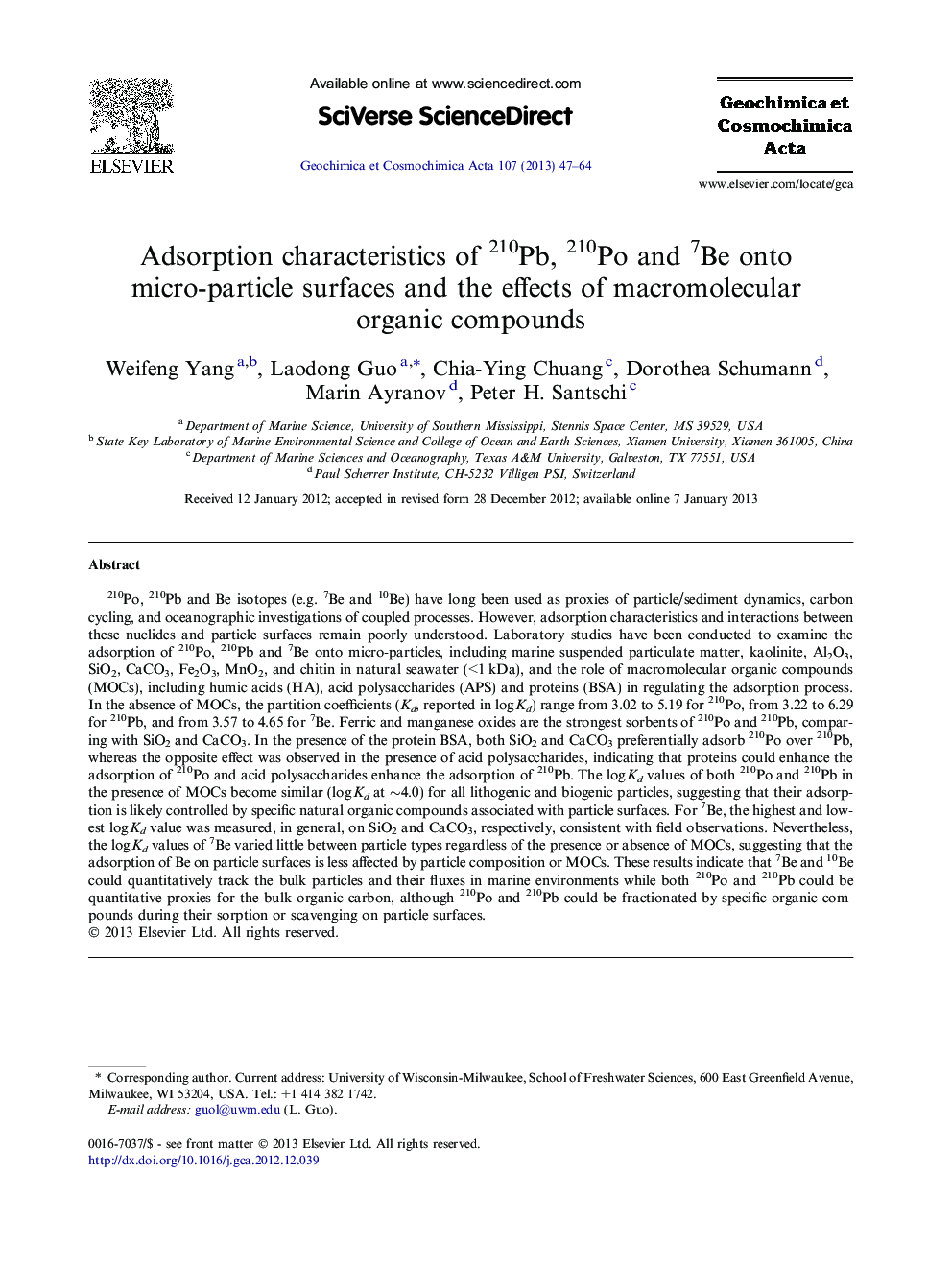| Article ID | Journal | Published Year | Pages | File Type |
|---|---|---|---|---|
| 4702458 | Geochimica et Cosmochimica Acta | 2013 | 18 Pages |
210Po, 210Pb and Be isotopes (e.g. 7Be and 10Be) have long been used as proxies of particle/sediment dynamics, carbon cycling, and oceanographic investigations of coupled processes. However, adsorption characteristics and interactions between these nuclides and particle surfaces remain poorly understood. Laboratory studies have been conducted to examine the adsorption of 210Po, 210Pb and 7Be onto micro-particles, including marine suspended particulate matter, kaolinite, Al2O3, SiO2, CaCO3, Fe2O3, MnO2, and chitin in natural seawater (<1 kDa), and the role of macromolecular organic compounds (MOCs), including humic acids (HA), acid polysaccharides (APS) and proteins (BSA) in regulating the adsorption process. In the absence of MOCs, the partition coefficients (Kd, reported in log Kd) range from 3.02 to 5.19 for 210Po, from 3.22 to 6.29 for 210Pb, and from 3.57 to 4.65 for 7Be. Ferric and manganese oxides are the strongest sorbents of 210Po and 210Pb, comparing with SiO2 and CaCO3. In the presence of the protein BSA, both SiO2 and CaCO3 preferentially adsorb 210Po over 210Pb, whereas the opposite effect was observed in the presence of acid polysaccharides, indicating that proteins could enhance the adsorption of 210Po and acid polysaccharides enhance the adsorption of 210Pb. The log Kd values of both 210Po and 210Pb in the presence of MOCs become similar (log Kd at ∼4.0) for all lithogenic and biogenic particles, suggesting that their adsorption is likely controlled by specific natural organic compounds associated with particle surfaces. For 7Be, the highest and lowest log Kd value was measured, in general, on SiO2 and CaCO3, respectively, consistent with field observations. Nevertheless, the log Kd values of 7Be varied little between particle types regardless of the presence or absence of MOCs, suggesting that the adsorption of Be on particle surfaces is less affected by particle composition or MOCs. These results indicate that 7Be and 10Be could quantitatively track the bulk particles and their fluxes in marine environments while both 210Po and 210Pb could be quantitative proxies for the bulk organic carbon, although 210Po and 210Pb could be fractionated by specific organic compounds during their sorption or scavenging on particle surfaces.
